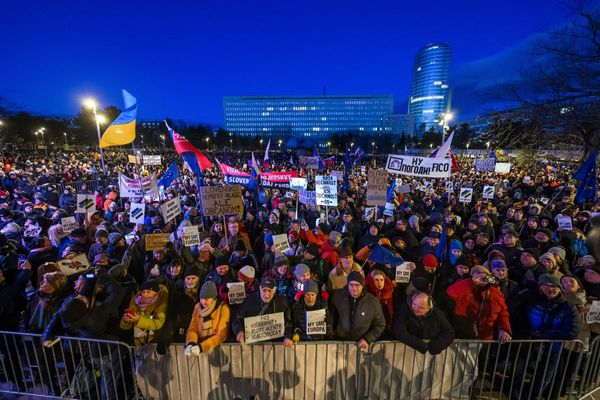
In recent weeks, riots have erupted in some, but not all, ethnically mixed Israeli cities. Media reports focus on the cases in which mobilizations have turned violent, especially on the Israeli right, but it’s also important to identify the similarly situated cities where dissent has been more restrained and the possible reasons why.
Acre, known locally as Akko or Akka, is a small mixed city in the north that has been plagued by violence and arson by both Arabs and Jews for more than a week. In contrast, Haifa, located 15 miles south, has experienced significantly less violence, despite its much larger population and higher proportion of Arab citizens.
To explain the difference between the two, it helps to first distinguish between rioting within Israel and the conflict in Gaza. Whereas the conflict in Gaza involves Hamas, which has taken advantage of the dissent within Israel, potentially to bolster its own political standing, the riots in Israel are more disaggregated and result from accumulated grievances among the Arab population that has remained in Israel since the 1948 war.
Yet grievances alone do not adequately explain why some areas within Israel are experiencing intensified violence while others are not. Taking a closer look at Acre and Haifa, both located on the shores of the Mediterranean, brings to light other factors that may be contributing to the eruption of more extreme violence in certain locations.
Of the 48,000 people who live in Acre, about 15,000 are of Arab descent. Since rioting began on May 10, Acre has experienced waves of violence by both Arabs and Jews. Extremists have thrown rocks and Molotov cocktails; engaged in violent clashes and attacks; set cultural centers, police stations, restaurants, cars, stores, and traffic lights ablaze; and attempted to beat a passerby to death.
About 15 miles south is Haifa. A much larger city, Haifa has some 280,000 residents, of which about 50,000 are of Arab descent. Haifa has also experienced violence, including stoning, clashes, arson, and attacks on stores. Although there were attempts by both Israeli right-wing activists and Arabs from outside the city to exacerbate the situation, mass dissent in Haifa has involved mostly nonviolent protests, including protests against the interethnic violence.
Beneath these two very different experiences of the last few weeks lie different histories and socioeconomic features between the two cities.
Compared to Haifa, Acre is generally poorer and has a higher rate of unemployment, which disproportionally affects the Arab population. It also has a less developed economy, which relies heavily on factory jobs and fishing. Both of these sectors have declined in recent decades. The tourism industry, previously a major source of revenue, has likewise trended downward, especially during the coronavirus pandemic. Meanwhile, Haifa’s service sector-dominated economy has been able to respond to the pandemic and its impacts more effectively.
Demographically, Acre is more segregated than Haifa, with Jews and Arabs residing primarily in separate neighborhoods. And group identity in Acre tends to be centered more on ethnicity than other factors, such as socioeconomic class.
In part, that may be because its Arab population is more homogenous and is made up mostly of Muslims. By contrast, Haifa’s Arab population is more diverse, made up not only of Muslims, but also of Christian Arabs. In turn, other types of cross-cutting identities have been historically important. Haifa has a strong history of class-based identity, for example, including in the ethnically mixed neighborhoods (where port workers have resided), where a prevalence of left-wing voters resulted in the nickname “Red Haifa.”
The education systems in both cities are also different. Haifa, for its part, has invested heavily in education, including in Arabic-speaking schools. The city’s École des Sœurs de Nazareth, a Catholic school, is ranked among Israel’s top 20. The city is also home to a university, which enrolls many Arabs from Haifa and nearby villages. The University of Haifa’s student body has the largest representation of Arabs of any in Israel. The university also has a special admissions program for Arab candidates, which relaxes some of the language requirements that non-Arab students must fulfill.
Although employment challenges for graduates, especially Arabs, remain, the education system in the city provides a pathway for upward mobility. For young Arabs in Acre, who do not enjoy the same level of primary and secondary education as their Haifa counterparts, the chances of university admissions are lower, and as a result the prospects of future mobility are more limited.
Things are far from peaceful in Haifa, and the situation there could quickly deteriorate. For the time being, however, some semblance of restrained dissent has been maintained. The precise answer to why will undoubtedly require further research, but for now, it seems reasonable to speculate that the vastly different socioeconomic systems in place in both cities are at play.
While many of Haifa’s—and Israel’s—citizens are committed to coexisting, coexistence is not necessarily the same as equal opportunity, which may be key to more stable relations between Jews and Arabs.
By moving beyond the focus on grievances, effectively reallocating resources, ensuring a proportional political representation in the Israeli parliament, improving access to education and job sectors where Arabs are underrepresented (for example, in high tech), and reducing residential disaggregation, the government and society in Israel could give the Arab population a greater stake in the state and ultimately reduce the probability of violence.
Research on civil conflict shows the importance of all such factors to peace. The ability of Haifa to avoid, to a large extent, the violence in other mixed cities offers lessons in how to start working toward addressing some of these issues.







